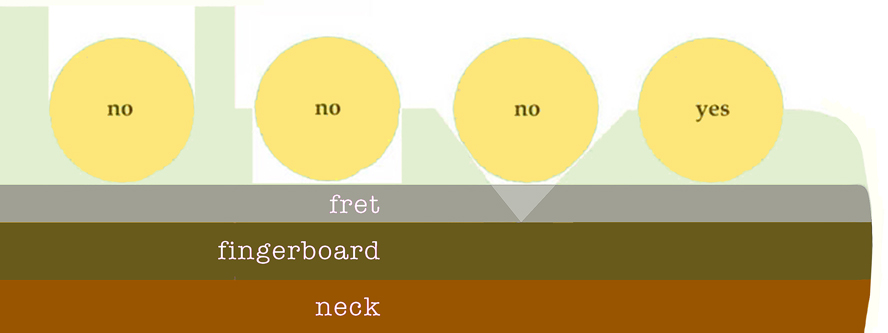Last Triumph
Senior Member
- Messages
- 261
I've finally got my VIP finished and I'm struggling to get the action low enough.
The neck was set up and dressed by Cagey on here and the frets are beautiful.


Excuse my metric conversions, I'm in the UK....
I've got the action on the low E at about 5.5/64 (2.25 mm) gap from underside of the string to the 12th fret, which could go a tiny bit lower if I were to accept a little more buzz up top, but it's the higher strings that are causing me an issue.
The absolute lowest I can get the high E is 4.8/64 or 1.95 mm (gap at 12th) and even at that I can't quite get a full tone bend on the 17-21 fret without it choking out.
Where am I going wrong?
Logic tells me I should loosen the truss rod a touch for some relief, but it hardly made any difference at those high frets, plus made the action lower down the neck way too high. Tightening the truss rod made it slightly worse which kind of make me think that Cagey had set it up about right (not that I doubted him).
Here's the thing though...
I detest a high action.
I just mildly hate a 'normal' action.
I love a really low action.
My first ever guitar that I learned to play on was a POS Tanglewood ('92 when they were really crappy) LP copy with awful cheap hardware and questionable build - however the one thing it had going for it was an almost impossibly, unfathomably, scientifically improbably low action - to the point where you couldn't get a a thin beer mat under any of the strings.
I had a genuine Gibson LP some years later and was always disappointed that despite having it set up properly, the action was never as low as the cheap POS copy.
This is even higher than the Gibson and to the point where I don't enjoy playing it.
Where do I go from here?
Do I tighten it right up to lower the action at the 12th, then raise the bridge to compensate?
What happened to the Tanglewood POS? My ex smashed it into the wall whilst expressing her displeasure at me for something trivial. Probably squeezing the toothpaste from the middle or something. Like I say - my ex.
The neck was set up and dressed by Cagey on here and the frets are beautiful.


Excuse my metric conversions, I'm in the UK....
I've got the action on the low E at about 5.5/64 (2.25 mm) gap from underside of the string to the 12th fret, which could go a tiny bit lower if I were to accept a little more buzz up top, but it's the higher strings that are causing me an issue.
The absolute lowest I can get the high E is 4.8/64 or 1.95 mm (gap at 12th) and even at that I can't quite get a full tone bend on the 17-21 fret without it choking out.
Where am I going wrong?
Logic tells me I should loosen the truss rod a touch for some relief, but it hardly made any difference at those high frets, plus made the action lower down the neck way too high. Tightening the truss rod made it slightly worse which kind of make me think that Cagey had set it up about right (not that I doubted him).
Here's the thing though...
I detest a high action.
I just mildly hate a 'normal' action.
I love a really low action.
My first ever guitar that I learned to play on was a POS Tanglewood ('92 when they were really crappy) LP copy with awful cheap hardware and questionable build - however the one thing it had going for it was an almost impossibly, unfathomably, scientifically improbably low action - to the point where you couldn't get a a thin beer mat under any of the strings.
I had a genuine Gibson LP some years later and was always disappointed that despite having it set up properly, the action was never as low as the cheap POS copy.
This is even higher than the Gibson and to the point where I don't enjoy playing it.
Where do I go from here?
Do I tighten it right up to lower the action at the 12th, then raise the bridge to compensate?
What happened to the Tanglewood POS? My ex smashed it into the wall whilst expressing her displeasure at me for something trivial. Probably squeezing the toothpaste from the middle or something. Like I say - my ex.



